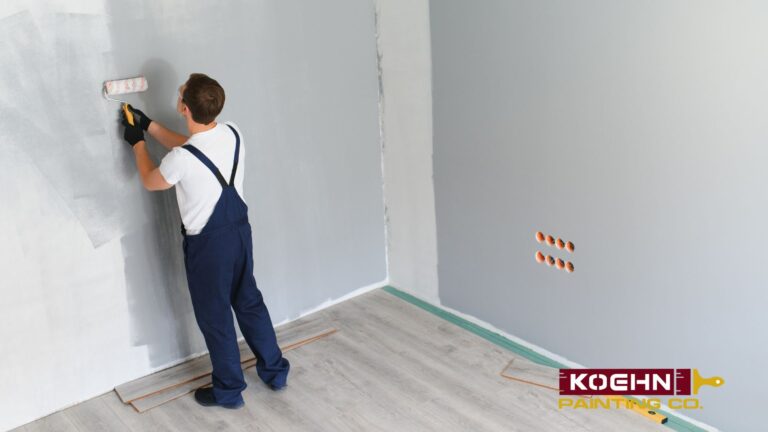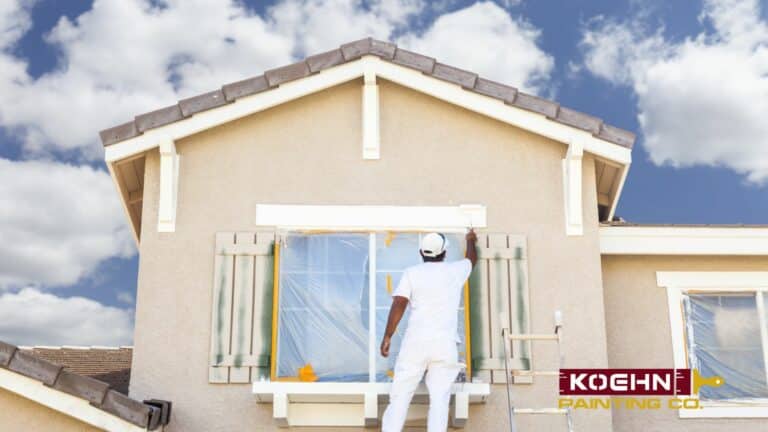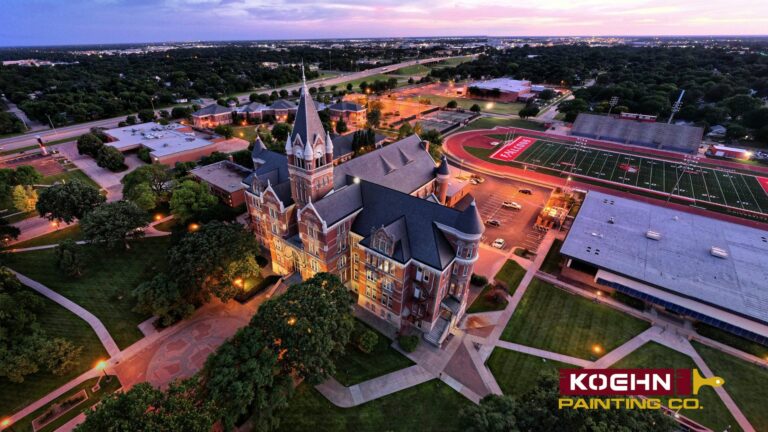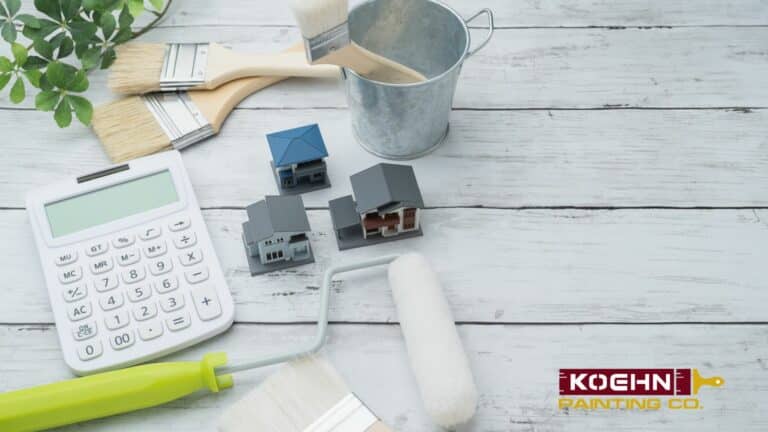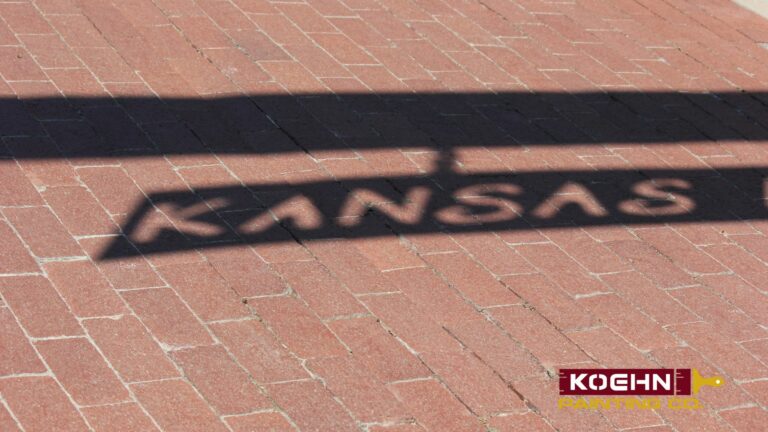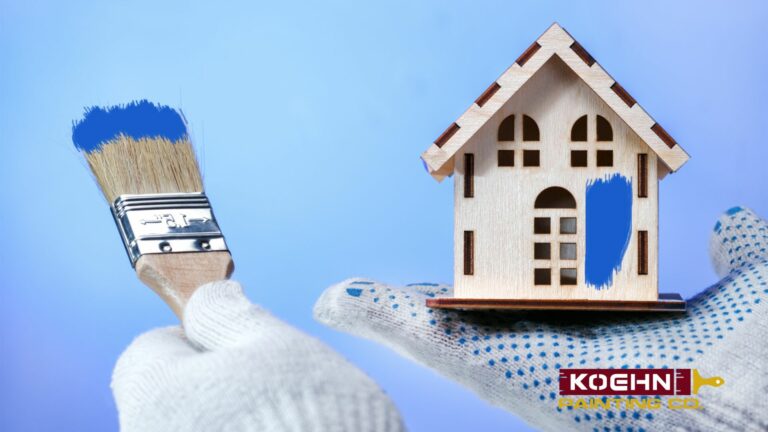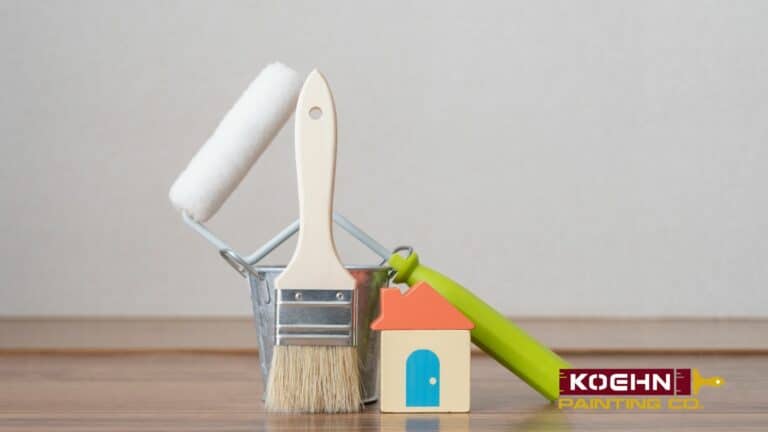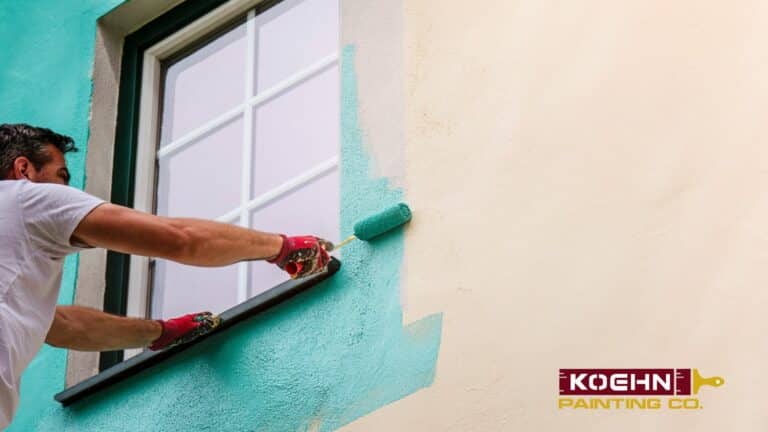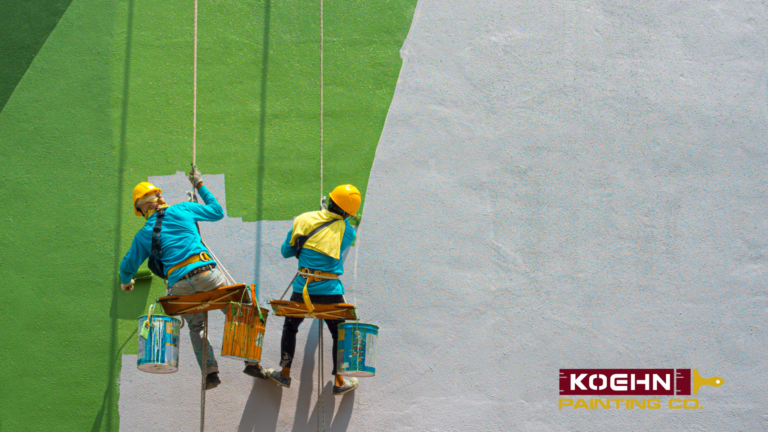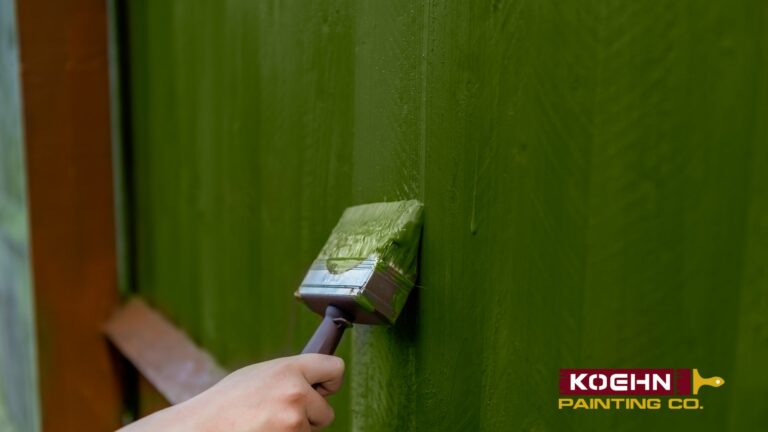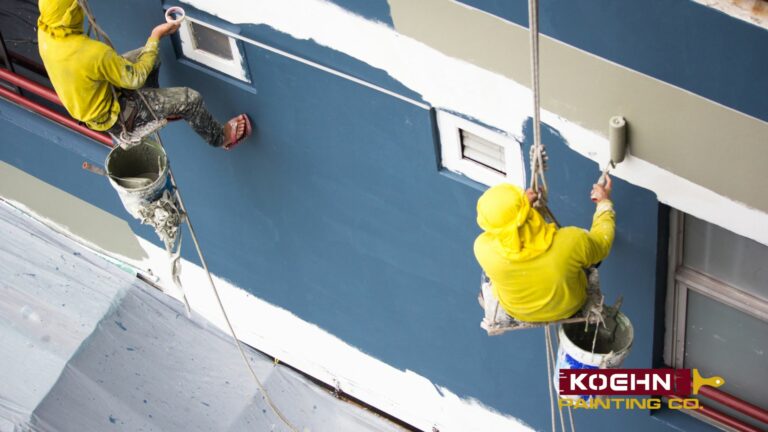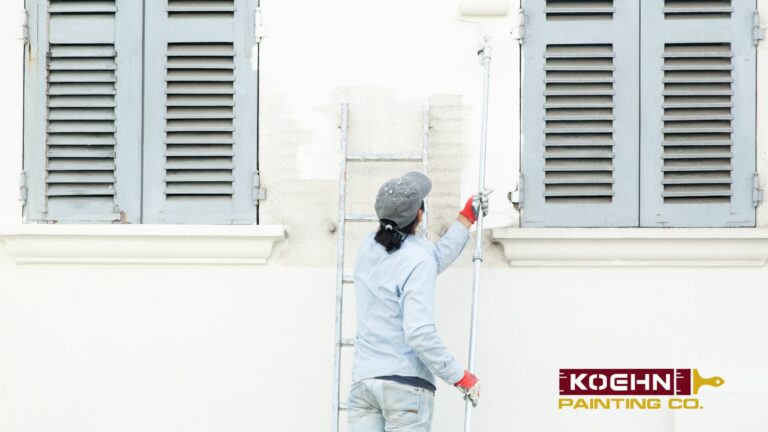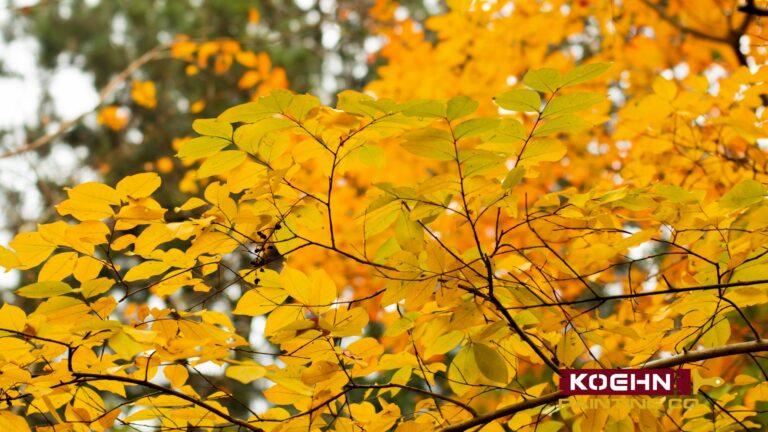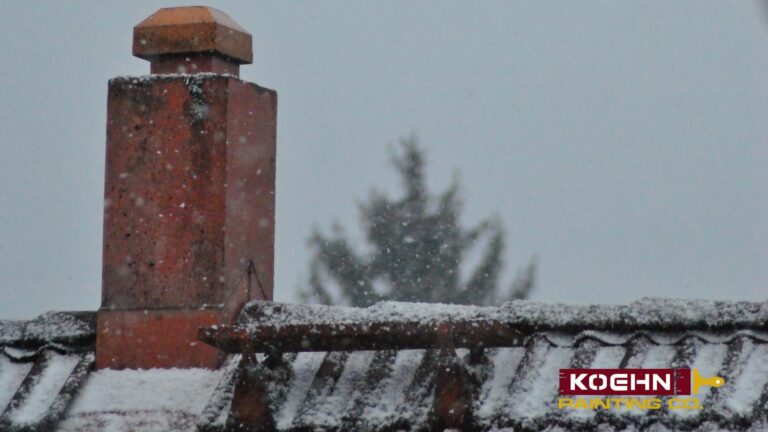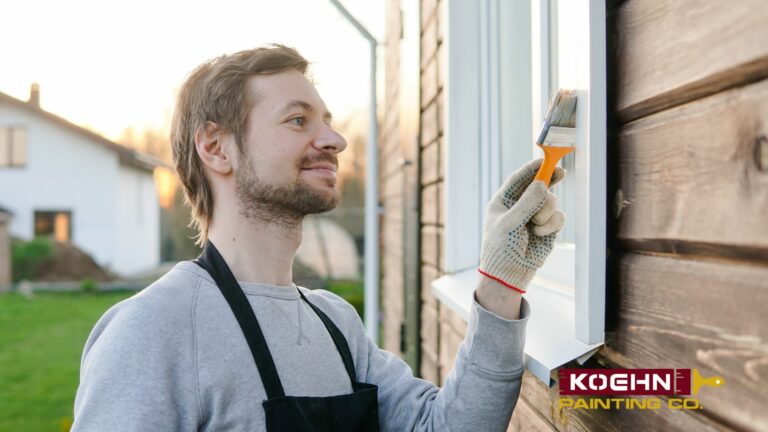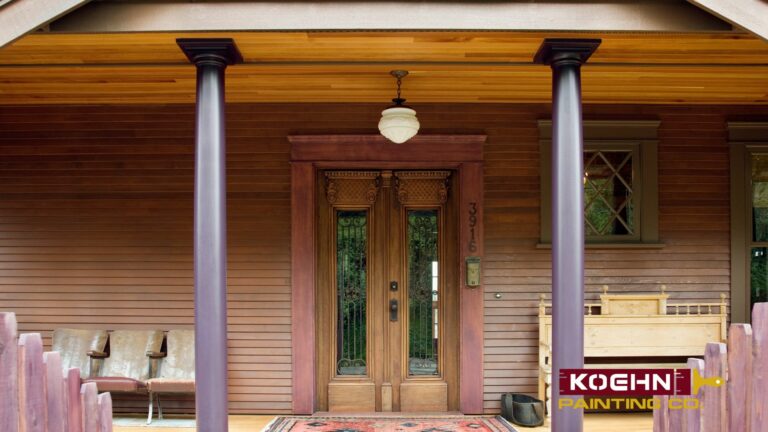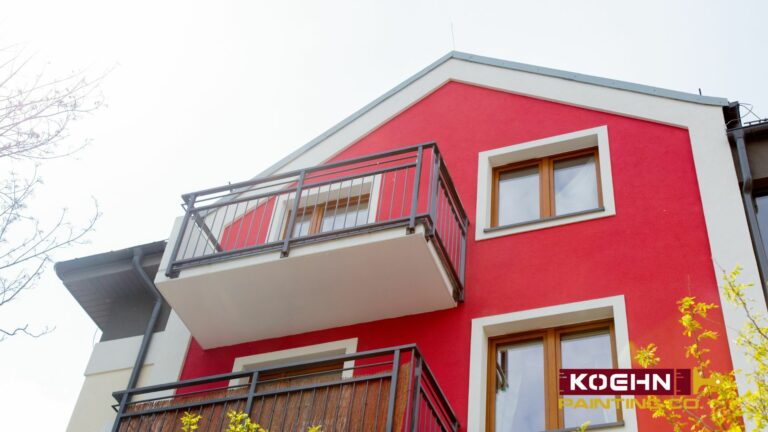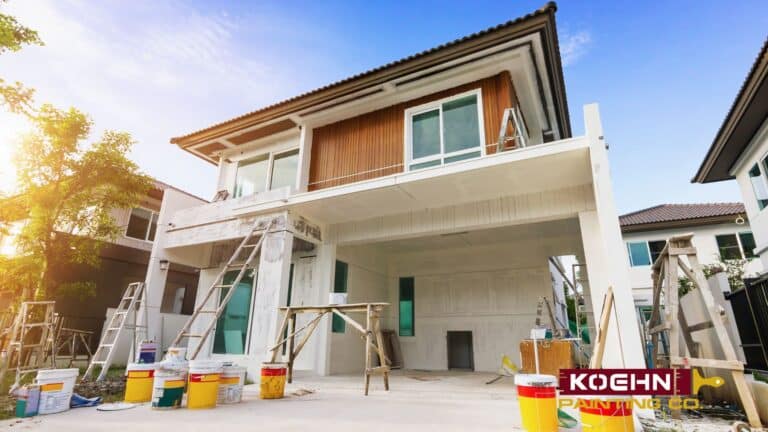Do You Need to Prime Exterior Wood Before Painting?
Do you need to prime exterior wood before painting? It’s a question we receive frequently—and the surprising truth is that most paint issues arise long before the brush even touches the surface. In fact, industry studies indicate that over 80% of exterior paint failures are due to inadequate surface preparation, not the paint itself.
Sound familiar? The signs are always there: it’s peeling paint just a year after finishing the job, cracking where moisture sneaks in, or a finish that looks patchy no matter how many coats are applied. It’s frustrating—especially when one has invested time, money, and energy into making your home look its best.
That’s the primer’s task. It’s not the most glamorous part of painting, and it rarely gets the spotlight, but it’s often the difference between a flawless, long-lasting finish and a redo waiting to happen. If you’ve been asking yourself lately, do you need to prime exterior wood before painting?, you’re already on the right track.
Anyone who has painted their house would just want the paint to go on smoothly and stay put, probably for two, five, or even ten years down the line. However, paint can’t do all the work on it own, so primer sets the stage for durability, color accuracy, and moisture protection. It’s like an invisible insurance policy against early paint failure. And once again, if you’re wondering do you need to prime exterior wood before painting, the answer often lies in what kind of results you expect.
Now, does that mean you always have to prime? Not necessarily. There are smart exceptions, and we’ll cover those too. The key is answering the question, do you need to primer exterior wood before painting? And when could you skip it without sabotaging the result?
So, before you open that first can of paint, let’s break down everything you need to know about prepping exterior wood the right way, why is primer important, when it’s worth priming, when it’s not, and exactly how to do it for a professional-looking finish that holds up to the elements.
Primer vs Paint: Why They’re Not the Same and Why It Matters for Exterior Wood
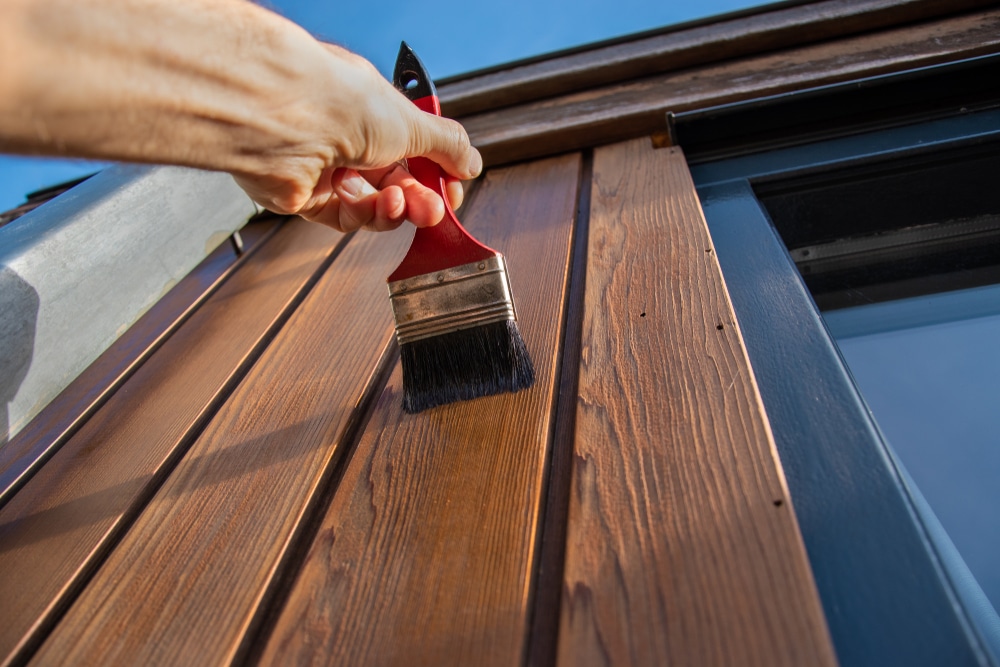
When it comes to exterior painting, understanding primer vs paint is one of the most important—and most overlooked—parts of the process. If you’ve ever asked yourself, “do you need to prime exterior wood before painting?”, the answer starts by knowing the difference between what each product is actually designed to do.
It’s easy to assume that paint is enough. After all, that’s the part we see when the job’s done. But if you’re skipping primer, you’re ignoring the foundation that determines how long your paint job will actually last—and how good it will look along the way.
So let’s break it down: paint vs primer isn’t just a matter of preference—it’s about purpose.
What Primer Actually Does (That Paint Doesn’t)
While paint is formulated to provide color, visual finish, and protection, primer is built to bond, seal, and prepare. It’s essentially the undercoat that allows paint to perform at its best. So next time someone asks you, do you need to prime exterior wood before painting, remember that without primer, even the best paint won’t reach its full potential.
Primer can be thought as the bridge between raw wood and a smooth, durable finish. It helps paint adhere better, last longer, and resist all the external forces working against it—moisture, sun exposure, mildew, and general wear and tear.
So do you need to prime exterior wood before painting if you want long-term protection against harsh weather? Absolutely. Especially in climates where moisture and UV exposure wreak havoc on unsealed surfaces.
In essence, prime can help with:
- Protecting wood from moisture, mildew, and weather damage: Unprimed wood is vulnerable. It absorbs moisture from rain, humidity, or even morning dew, which leads to swelling, warping, rot, and mildew. Primer acts as a moisture barrier, sealing the wood’s surface and giving exterior paint a much better chance of standing up to the elements.
- Primer improves paint adhesion: No matter how good the paint is, it can’t do much if it doesn’t stick. Raw wood—especially porous wood like cedar or redwood—doesn’t offer an ideal surface for paint alone. Primer is specifically engineered to grip porous, uneven surfaces and give the paint something to anchor to. Better adhesion means fewer issues like bubbling, peeling, or flaking, and the finish stays smooth and intact for years—not months.
- Primer enhances color vibrancy and uniformity: Ever put a light color over dark wood and ended up with a dull, uneven finish? That’s because wood can absorb paint at inconsistent rates. Primer helps seal the surface and create a uniform base, making the color pop the way it’s supposed to—without needing multiple coats of expensive paint. Especially when using lighter colors or bold hues, primer helps you achieve that rich, vibrant tone without the blotchy undertones or shadowy patches that raw wood can cause.
- Primer seals porous surfaces: Unprimed wood acts like a sponge: it drinks in the first coat of paint, leaving a half-finished surface and the need for more coats than budgeted for. Primer seals the pores in wood, so the topcoat goes on smoother, covers more, and stays where it’s supposed to. Basically, this allows to use less paint, save money, and get a better finish in fewer coats.
- Primer blocks tanning bleed and wood stains: Some woods—like cedar and redwood—release natural tannins that bleed through paint over time, causing brown or yellow stains to appear on the finished surface. Even previously stained wood or knots in older boards can push discoloration through your paint layer. A good-quality stain-blocking primer prevents that bleed, so your color stays clean, consistent, and crisp.
- Long-term cost savings: Exterior painting isn’t cheap, whether it’s DIY (even less cheap) or hiring a professional. Priming the exterior wood correctly can dramatically extend the paint’s lifespan, reduce the frequency of touch-ups or full repaints, and prevent damage that would require wood replacement down the road. That’s real money saved—and fewer weekends spent with a paintbrush.
So… paint vs primer? The verdict is clear. If the idea is a long-lasting, professional-looking finish that stands up to rain, sun, and time, primer isn’t optional but essential. It’s not about being overly cautious or adding an extra step “just in case.” It’s about doing it right the first time so there’s no need to pay for it later.
Next time you ask yourself, “Do you need to prime exterior wood before painting?” remember this: paint makes it look good, but primer makes it last.
Why Is Primer Important When Painting Exterior Wood?
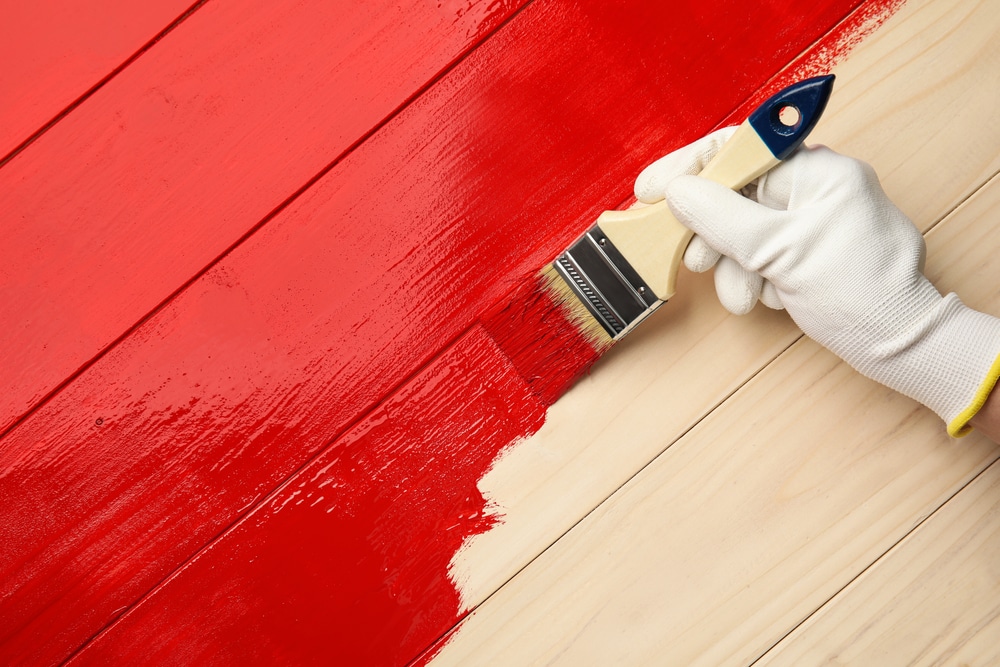
Why is primer important when painting exterior wood? Skipping it is one of the quickest ways to waste time, money, and effort on a paint job that won’t last. If you’ve ever wondered, “Do you need to prime exterior wood before painting?” the answer comes down to one thing: how long you want that paint to actually last.
Primer is one of the most important parts of the process, no matter if you’re dealing with fresh lumber, old siding, or weathered fencing, understanding the role primer plays is essential to getting a professional, long-lasting finish.
So, let’s break it down and look at exactly what happens if you don’t prime exterior wood when you absolutely need it, and where you might be able to skip it (with caution).
Why Primer Is Essential in These Common Exterior Scenarios
- Bare or new wood surfaces
This is the most obvious case. New or bare wood has nothing for the paint to grip onto. Wood is naturally porous, and without a primer to seal the surface, the paint will soak in unevenly, reducing adhesion and coverage.
In these cases, primer creates a uniform base, sealing the pores and helping your topcoat stick instead of being absorbed. Without it, the paint can peel, blister, or fade far sooner than it should.
So, can you paint an exterior without primer on new wood? Technically, yes. But don’t be surprised if you’re repainting it next year.
- After scraping/sanding peeling paint
If you’ve removed old, flaking paint, you’ve likely exposed areas of raw wood underneath. That bare surface needs to be re-sealed with primer before applying a new topcoat — otherwise, you’re inviting the same peeling problem all over again.
Paint alone won’t correct uneven porosity or stick well to the patchy surface left behind after scraping. Primer fills in the gaps, evens the absorption, and creates a fresh base to which paint can properly adhere.
- Switching from dark to light paint colors
Ever tried painting over a deep red or navy with white or beige? You’ll quickly notice how many coats it takes, and even then, the original color might still bleed through.
This is where primer vs paint becomes painfully obvious. Primer neutralizes bold colors, so you get cleaner, brighter coverage with fewer topcoats. It also saves you from wasting time and money trying to mask an old color with layer after layer of paint.
- Painting over stained wood or previously unfinished wood
Stains, sealants, and untreated wood can all affect how paint performs. Stains can bleed through paint, while unfinished wood soaks up product inconsistently, leaving a blotchy finish.
A high-quality exterior primer acts as a barrier, locking in tannins and oils from the wood or stain underneath. It prevents unsightly discoloration and makes your topcoat more vibrant and uniform.
- Surfaces with damage or discoloration
If your wood shows signs of sun damage, uneven weathering, or dark patches, primer helps even out the surface, covers the discoloration, and creates a uniform tone for the paint.
Skipping primer in these cases often leads to visible flaws bleeding through your finish, defeating the purpose of repainting in the first place.
- High humidity or harsh climate exposure
If your home is in a region with extreme weather—hot summers, cold winters, heavy rain, or high humidity—primer provides an extra layer of defense.
It acts as a moisture-blocking sealant, helping prevent water intrusion that can cause swelling, cracking, mildew, and premature paint failure. Do you need to prime exterior wood before painting in tough climates? Absolutely. It’s your best insurance against the elements.
What Happens If You Don’t Prime Exterior Wood?
Let’s not sugarcoat it: skipping primer can cost you. Here’s what you might be in for:
- Peeling and flaking after a season or two
- Uneven color or blotchy coverage
- Excessive paint absorption, requiring more coats (and more money)
- Tannin stains bleeding through from knots or wood grain
- Moisture damage, rot, or mold underneath the paint layer
That’s why primer vs paint isn’t a debate, but it’s a process. They’re not interchangeable. One prepares the surface; the other finishes the job. And when you try to skip steps, the results usually speak for themselves.
So, do you need to prime exterior wood before painting to avoid all of this? Yes—and that decision alone can determine whether you’re repainting in 2 years or 10.
When You Might Be Able to Skip Priming
Now, let’s be fair. There are cases where priming isn’t mandatory—but it depends heavily on the condition of the surface and the type of paint you’re using. These could include:
- Painting Over a Previously Painted Surface in Good Condition: If the existing paint is clean, well-adhered, and not showing signs of cracking or peeling, you may not need to prime. Just wash, scuff sand, and repaint. But if there are any weak spots, it’s worth spot-priming those areas before moving forward.
- Using a High-Quality Paint-and-Primer-in-One Product: These hybrid products can work well on previously painted surfaces in good condition. But don’t be fooled by marketing—they are not a replacement for a dedicated primer in most exterior wood scenarios, especially on bare or damaged surfaces.
- Applying a Darker Color Over a Light Base Coat: If your new paint color is darker than the one underneath, you may get full coverage without primer—but only if the surface is clean and solid.
- Minor Touch-Ups Where Paint Is Still Adhering Well: Small fixes, chips, or isolated problem areas can be handled with spot-priming and a direct topcoat. Just make sure the paint around the repair is sanded and stable.
- Low-Stakes Surfaces Like Sheds or Temporary Structures: If it’s not exposed to constant weather, or if longevity isn’t a top concern, you may choose to skip priming. Just know the results may not last as long or look as polished.
If you’re going to skip primer, it should be a strategic decision, not a shortcut. Ask yourself:
- Is the surface stable and clean?
- Will my paint adhere without extra help?
- Do I care about durability and appearance over time?
If not, then go ahead. But if you’re aiming for a professional finish that holds up under pressure, priming is almost always worth the extra step.
Do You Need to Primer Exterior Wood Before Painting? Yes, But Only If You Want It to Last
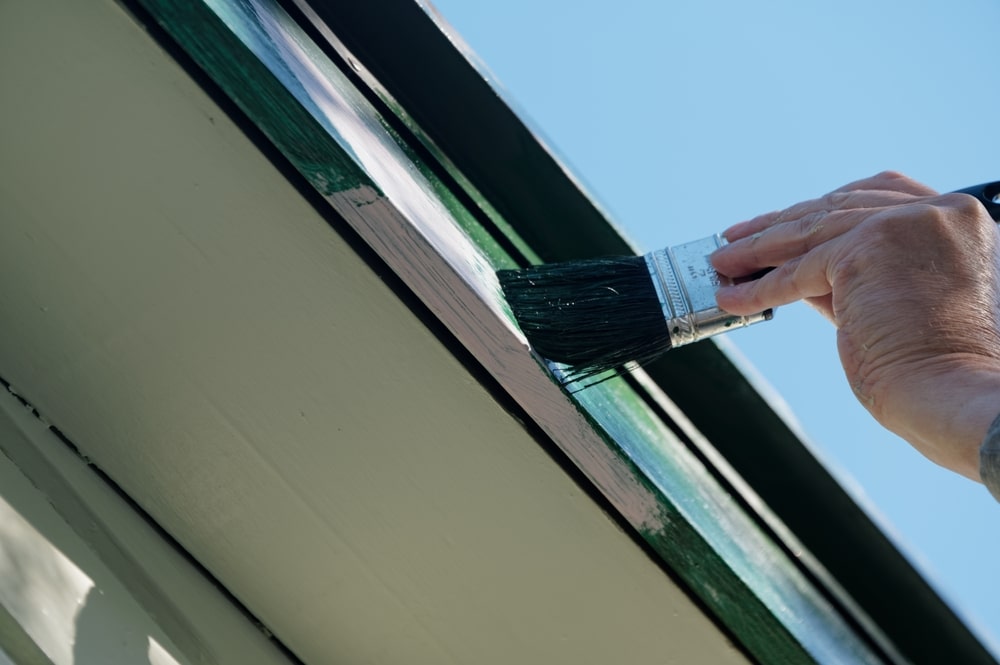
Do you need to prime exterior wood before painting? If you’re aiming for a long-lasting, professional-looking finish that stands up to weather, time, and wear, the answer is a clear yes. Primer is more than just an extra step—it’s the foundation that determines how well your topcoat performs. It’s what ensures better adhesion, smoother application, and stronger resistance to moisture and discoloration.
But here’s the catch: not all priming jobs are equal. Simply slapping on a coat of primer isn’t enough—you need to prep the surface properly and choose the right type of primer for your specific project.
Let’s walk through exactly how to prime exterior wood properly, step by step, so you can avoid the most common paint problems before they start.
Proper priming starts long before you open the can. Follow these essential steps to make sure your primer performs the way it’s supposed to—so your paint has a strong, durable foundation to work from.
Step 1: Clean and Sand the Surface
No matter how high-quality your primer is, it won’t stick to a dirty, rough, or flaky surface. Cleaning and sanding are critical first steps in surface preparation.
- Remove all dirt, dust, mildew, and grease. Use a stiff brush and a mild detergent or a specialized exterior cleaner if needed.
- Scrape off any old, peeling paint. If the surface is chalky or loose, your primer won’t bond well.
- Sand rough or uneven areas. Primer can help level the surface visually, but it won’t fix deep imperfections or splinters.
Step 2: Replace or Repair Damaged Wood
Priming over damaged or rotting wood won’t hide the problem—it just covers it temporarily.
- Inspect for rot, warping, or soft spots.
- Replace any boards that are too far gone.
- Fill small holes or cracks with exterior wood filler.
- Make sure the repairs are dry and smooth before moving on.
Proper repair now means fewer issues down the line—no peeling, cracking, or trapped moisture under the paint.
Step 3: Apply Caulk to Fill Gaps and Cracks
Moisture intrusion is one of the biggest threats to exterior paint durability. That’s why caulking before priming is a smart move—especially around joints and trim.
- Use high-quality exterior caulk to seal gaps around windows, doors, trim, and seams.
- This prevents water from seeping in behind the paint and causing bubbling or mold later.
Once the caulk is dry, your surface is fully sealed and ready for primer.
Step 4: Choose the Right Primer for Your Wood Type
One of the most common mistakes people make is choosing the wrong primer. Not all primers are created equal—and matching the product to your wood type and conditions matters more than you think.
- Oil-based primers: Great for raw wood, excellent stain-blocking properties, and ideal for woods with tannins like cedar or redwood.
- Latex (water-based) primers: Easier to work with, quicker drying, and lower odor—ideal for general use on painted surfaces in good condition.
- Stain-blocking primers: Designed to prevent tannin bleed and cover up previous stains, smoke damage, or dark wood tones.
- Bonding primers: Ideal for slick, glossy, or chalky surfaces where adhesion is a challenge.
If you’ve ever wondered, “Can you paint an exterior without primer?”, the truth is: you can—but only if you choose the right primer alternative. Otherwise, your paint will fail faster than you think.
Step 5: Apply Primer Evenly and Allow It to Dry Fully
Once your surface is clean, repaired, sealed, and you’ve chosen the correct primer—it’s time to apply.
- Brush, roll, or spray depending on your surface and preference.
- Make sure to apply a full, even coat, working it into the wood grain.
- Avoid over-applying—too thick of a coat can lead to cracking.
- Follow the manufacturer’s drying time recommendations (usually 1–4 hours, depending on the product and conditions).
Let it fully dry before painting. Skipping this step leads to poor adhesion and uneven coverage with your topcoat.
So, do you need to prime exterior wood before painting? The short answer is: In most cases, yes—especially if you care about results that last. Primer and paint are not interchangeable. Understanding primer vs paint helps you get better performance, a smoother finish, and protection that actually holds up over time.
FAQs About Priming and Exterior Painting
Below are some of the most frequently asked questions from homeowners—answered clearly, with no fluff.
Can I paint directly over old paint on wood?
Yes but only if the old paint is still in good condition. It must be clean, dry, and well-adhered. Always sand and clean the surface first. If there’s any peeling, chipping, or bare spots, spot-prime those areas for best results.
What happens if I skip primer on bare wood?
Poor adhesion, uneven color, tannin bleed-through, and faster paint failure. Bare wood absorbs paint inconsistently, leaving you with a patchy and short-lived finish.
What kind of primer should I use on exterior wood?
It depends on your wood type and condition. Use oil-based or stain-blocking primers for cedar, redwood, or previously stained wood. Latex primers work well for general use and previously painted surfaces. Bonding primers are best for glossy or difficult-to-stick surfaces.
Can I use interior primer for exterior surfaces?
No. Interior primers aren’t designed to withstand UV rays, rain, or temperature changes. Always use an exterior-grade primer for outdoor applications.
Is paint-and-primer-in-one a good substitute?
Sometimes—but only on well-maintained, previously painted surfaces. It’s not a substitute for dedicated primer on bare, damaged, or stained wood.
How long should I wait to paint after priming?
Typically 1–4 hours, depending on the primer and weather conditions. Always follow the manufacturer’s instructions for drying times.
Do I need to sand after priming?
Not always, but a light sanding can smooth raised grain or texture, improving the final finish.
What happens if you don’t prime exterior wood?
You’ll likely see peeling, poor coverage, moisture damage, and overall reduced paint lifespan. Primer is your first line of defense.
Do I need to prime wood for exterior paint?
Yes, especially if the surface is bare, stained, or previously unpainted. Primer improves adhesion and protects the wood underneath.
Can I use white paint instead of primer?
No. White paint doesn’t seal, bond, or block stains like primer does. It’s a cosmetic layer, not a prep product.
To Primer or Not to Primer — That Is the Question
Let’s recap the essentials.
- Do you need to prime exterior wood before painting? If the surface is bare, weathered, stained, or you’re switching colors—yes, you absolutely should.
- Can you skip it sometimes? Yes, but only on properly prepped, well-maintained painted surfaces or when using a paint-and-primer combo under the right conditions.
- What happens if you don’t prime exterior wood? You’re likely to face faster deterioration, uneven finishes, and costly repaints sooner than expected.
The truth is primer is the difference between a paint job that lasts and one that flakes in a year. It’s the hidden hero behind every high-quality, long-lasting exterior finish.
When in doubt, prime first, paint once—not the other way around.
